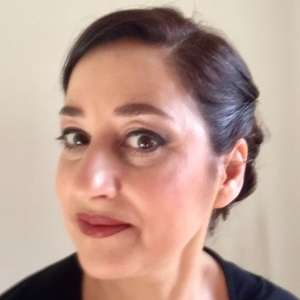The music of Dario Castello deserves to be heard more often. In this live stream from the West Road Concert Hall in Cambridge, the Academy of Ancient Music trained the spotlight on this lesser-known Italian Baroque master. We know next to nothing about Castello’s life. He may or may not have performed with his own ensemble at St Mark’s in Venice during Claudio Monteverdi’s tenure there as maestro di cappella. He may or may not have died in the Italian plague of 1629-31.
There is nothing hazy, however, about his musical legacy – two collections of sonatas for up to four string or wind instruments plus continuo. He described them as being ‘in stil moderno’, which was also the name chosen for this programme of sonatas by Castello and vocal pieces by Monteverdi and Barbara Strozzi. The ‘modern style’ in question refers to the departure from 16th-century polyphony in favour of solo voices and highly contrasting expressive means that was crucial to the flourishing of opera.
Thus the two laments by Strozzi, which included the heart-wrenching Lagrime mie, and two madrigals by Monteverdi provided a contextual background for Castello’s exuberance and inventive exploitation of instrumental timbres. Mezzo-soprano Helen Charlston sang them – no, lived them – with poignant intensity. Her tonal purity sometimes suffered when she switched registers, but in these pieces what really counts is the ability to get the undiluted emotions across. In this Charlston succeeded marvellously, with sensuous, meandering lines, clipped exclamations of outrage and the capacity to tie everything together in an engrossing narrative.
Throughout she had excellent support from Steven Devine on harpsichord and Eligio Luis Quintero on theorbo, who also provided the continuo for Castello’s sonatas. These were cleverly programmed to create a cumulative effect with an increasing number of instruments, starting with the Sonata prima for violin solo and ending with one for four string instruments, including two violettas. The violetta is an ancestor of the cello. Joseph Crouch played an actual violetta, while Sarah McMahon played the other violetta part on the cello, which only enhanced the mix of sonorities.
Bojan Čičić was the fiery soloist in the first sonata. He extracted a robust sound with smoky low notes from his violin, which he rests below his collarbone instead of under his chin, a historically informed practice preferred by some baroque players. His florid passages, though not entirely flawless, sparked with plenty of character. Čičić’s flamboyant style was the perfect foil for the lyrical elegance of violinist Persephone Gibbs. The two retained their distinctive styles as they were joined by their colleagues on the lower strings and the pieces became more intricate.
Even when balancing three or four voices Castello gives each instrument a significant role. In the Sonata duodecima the pair of violins first echoed each other in the effervescent opening passage. Then a subdued theme was introduced by the violetta, which the three instruments mulled over exquisitely. In the final piece, the elaborate Sonata quattordicesima for two violins and two violettas, the four voices blended and broke away from each other with sumptuous clarity. If the aim of this concert was to spur a (re)acquaintaince with all 29 sonatas by Castello, then I believe it was eminently achieved.
This performance was reviewed from the Academy of Ancient Music's video stream


